(ARCHIVE) Yamaha SG-2 Bright Red 1966
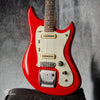
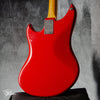
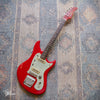
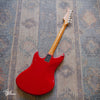
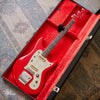
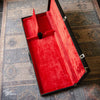
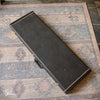
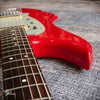
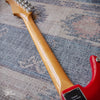
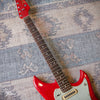
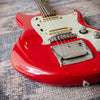
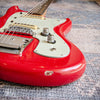
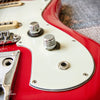
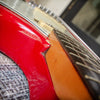
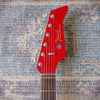
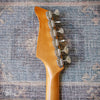
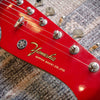
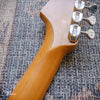
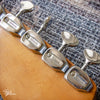
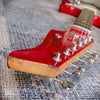
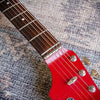
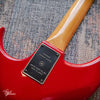
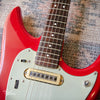
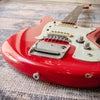
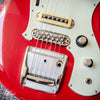
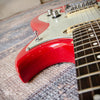
- Description
- Guitarchives
Yamaha SG-2, red, made in Japan 1966. The SG-2 and it's three-pickup brother were the very first electric guitars Yamaha ever made. They were the result of a consultative design process between players, machinists and engineers, and Yamaha made all the hardware and pickups etc in house. The design was influenced by Fender offset models and Mosrite's Ventures shape, but it's not a direct copy of anything. They weren't cheap in 1966, with a USA price of $249.50; more than a Fender Telecasteror Mustang at the time. The build is very good, with a gorgeous dark rosewood fretboard topping a straight, comfy birdseye maple neck and a tidy, well balanced body that would have been entirely carved by hand. The bridge works really well, it's easy enough to adjust, delivers a healthy break angle and doesn't suffer the slippage issues you get on Fender offset bridges. The tone is awesome too: thick and snappy, heaps of attack and clarity, warm and open on the top end, dry and wide in the mids. It has a dual circuit option similar to a Jag, so you can get thicker juicier tones with the top horn slider up or dial a generous surf twang using the three way switch on the lead circuit. Needless to say, it looks fantastic: the shape is a little less kooky than the slightly later Flying Samurai guitars, but still suitably offbeat, and the little details like the script logo, teardrop tuners and mint guard add plenty of pizzaz. I really enjoy this one, it's easy to play, remarkably sturdy and reliable and looks like a million weird bucks. Big yes from me.
Model: Yamaha SG-2
Made: Japan, Nippon Gakki plant, 1966
Serial: 0939
Finish: bright red, gloss urethane
Body: nato
Neck: maple, rosewood fretboard, 25.5" scale, 42mm nut with zero fret, 1" radius
Weight: 3.660kg
Mods: zero fret replaced
Pickups: Yamaha single coil x2
Accessories: basic non-original vintage hard case
Cosmetic condition notes: minor finish wear. The headstock has some scuffs and dimples on the end and both edges, as well as some dimples on the back and light scuffs on the front. The neck is clean and smooth in the hands, minor dimples on the back only. The back has a couple of small chips on the bottom horn, dents in the elbow area and near the back edge as well as widespread scuffs and dimples around the whole body. The sides have a few dimples on the top horn, some chips and scuffs in the elbow area, a chip, some dimples and scuffs near the jack and some dimples on the bottom horn. The front has some dents around the tailpiece, dimples around the jack and in the elbow area and plenty of play wear on the guard and horns. One of the knobs is missing most of it's skirt, and the tremolo arm and attachment are missing.
Overall: very good condition (8/10)
Playing condition notes: Action is low, neck is straight, intonation is good, truss rod works. All electronics tested and working properly. Wearing fresh 11/49 Moonshiners strings.
Fret life: 7/10, there's some normal wear and the wire size was small to begin with, but they're pretty even with no major buzz issues.
This listing is an archived entry. We love to look back and remember fondly what characters we've had through the store, so we keep them around for reference.


























